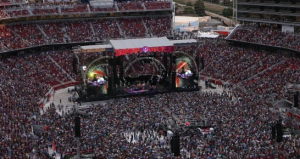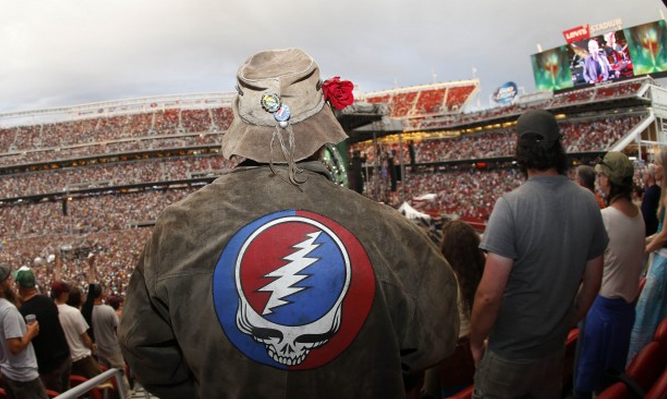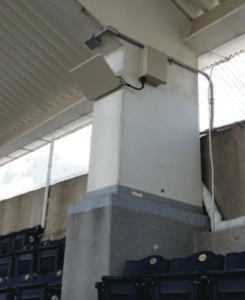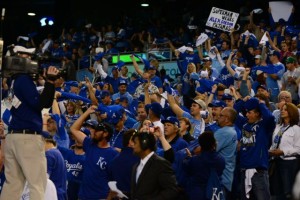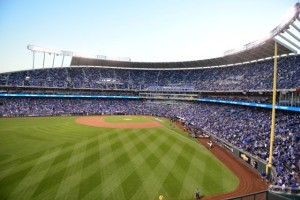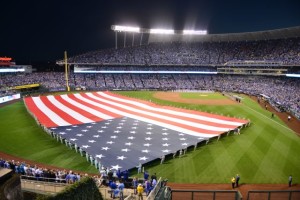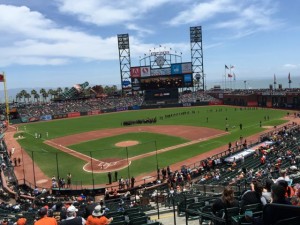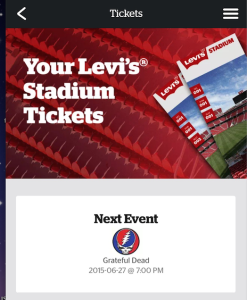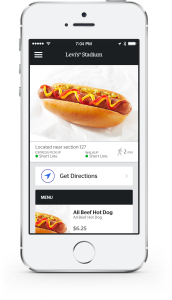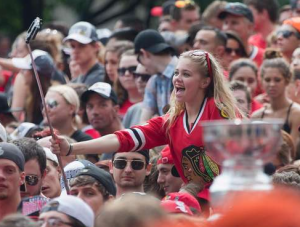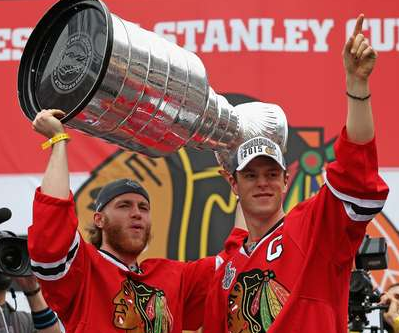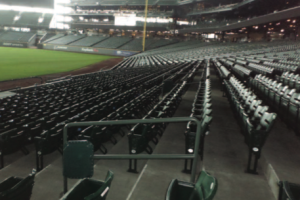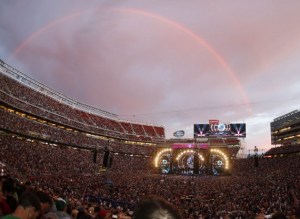
The magical “rainbow” at June 27 Grateful Dead concert at Levi’s Stadium. Credit all photos: Levi’s Stadium
Roger Hacker, the 49ers’ senior manager for corporate communications, said the fans attending the “Fare thee Well” concerts last weekend used 2.37 TB of Wi-Fi data on Saturday June 27 and another 2.13 on Sunday June 29, both marks well below the 4.5 TB record set by the WrestleMania 31 event in March. The separate Dead concert totals were also below the 3.3 TB mark set during the Niners’ home football opener last Sept. 14 against the Chicago Bears.
According to Hacker the Levi’s Stadium Wi-Fi network saw 17,824 unique users on Saturday and 23,152 on Sunday, roughly around 20 percent of attendance each night (according to Hacker the concert attendance was 75,496 on Saturday and 74,947 on Sunday; the Levi’s Stadium attendance record so far is the WrestleMania 31 event, at 77,496.). The concert also saw the second use of the new Levi’s Stadium on-field temporary Wi-Fi network, which serves the temporary seats set on the stadium’s field. The 41 extra Wi-Fi APs, Hacker said, supported another 989 users Saturday and 1,050 users on Sunday. The field network used a mix of APs installed on the sideline walls as well as APs mounted on railings and underneath the floor surface.Though there were more users on the network Sunday, there was more data used Saturday, most likely because of a somewhat magical rainbow that appeared over the stadium during the show, an atmospheric event that triggered the highest peak rate of usage, 2.29 Gbps. While the Levi’s Stadium app also was supporting in-seat food delivery for the concerts, Hacker did not have any food ordering stats to share.
